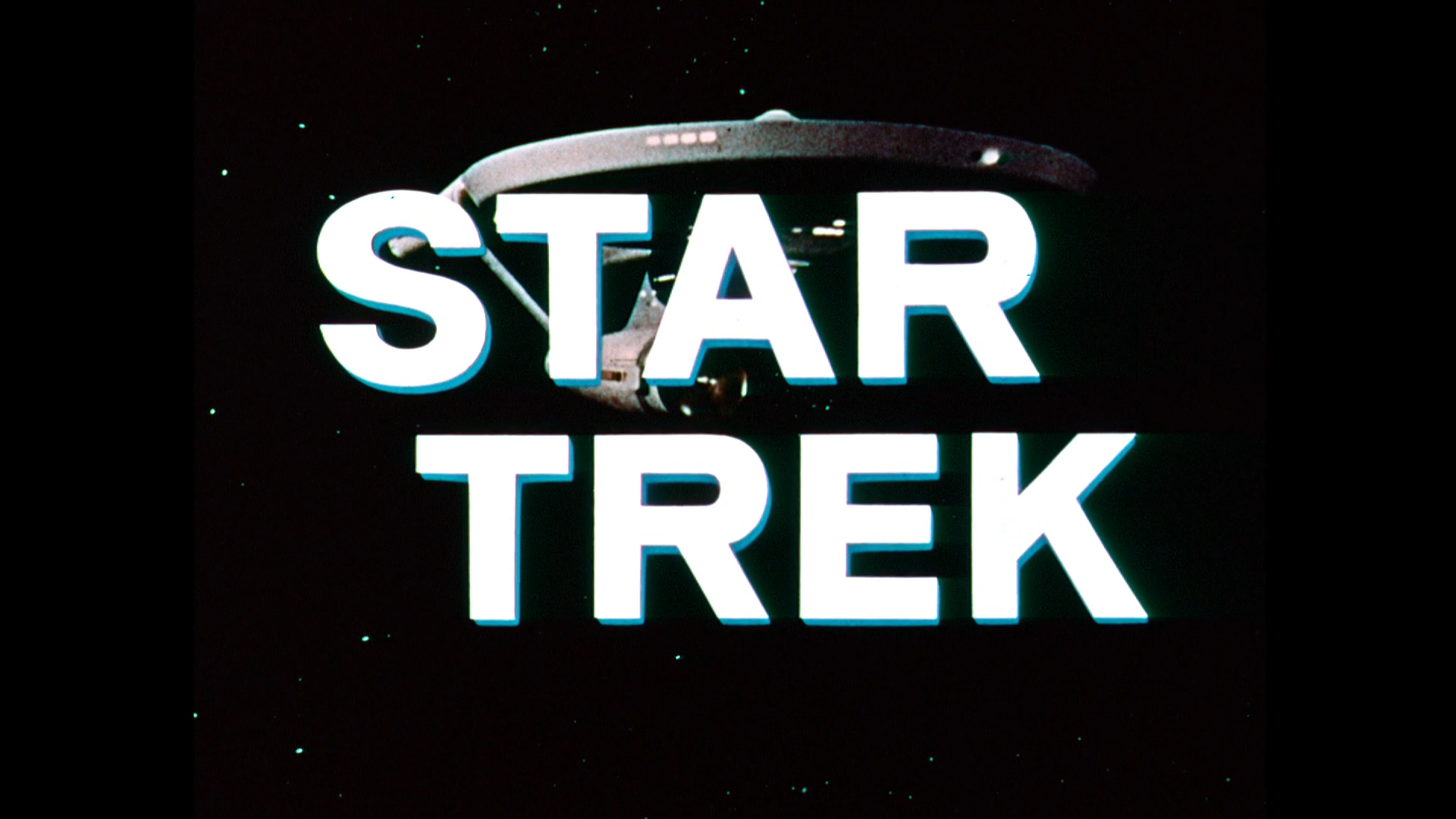Everyone knows the story. Gene Roddenberry shot “The Cage” as the pilot for a new show called Star Trek. It starred Jeffrey Hunter as Captain Christopher Pike and was deemed “too cerebral” by the network. In a rather unheard-of move at the time, Roddenberry was given the chance to try again. This time, “Where No Man Has Gone Before” sold the network on Star Trek, aired as the third episode of the series and history was born.
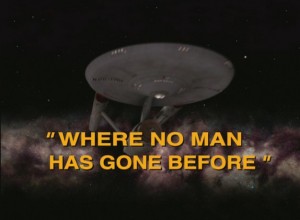 What few people know and what fewer have seen is that as initially presented, “Where No Man Has Gone Before” is formatted completely differently from the rest of the series. Sure, when we saw it, it started with “Space… the final frontier…”, led into Alexander Courage’s now-famous main theme. and so on.
What few people know and what fewer have seen is that as initially presented, “Where No Man Has Gone Before” is formatted completely differently from the rest of the series. Sure, when we saw it, it started with “Space… the final frontier…”, led into Alexander Courage’s now-famous main theme. and so on.
Up until recently, if you went to a convention, you might have been able to find an old, bootleg copy of the lost, original version of this episode. But when CBS Entertainment released the 3rd season Blu-ray of the original series, they included, for the first time, this incredible gem. A look at a Star Trek that could have been.
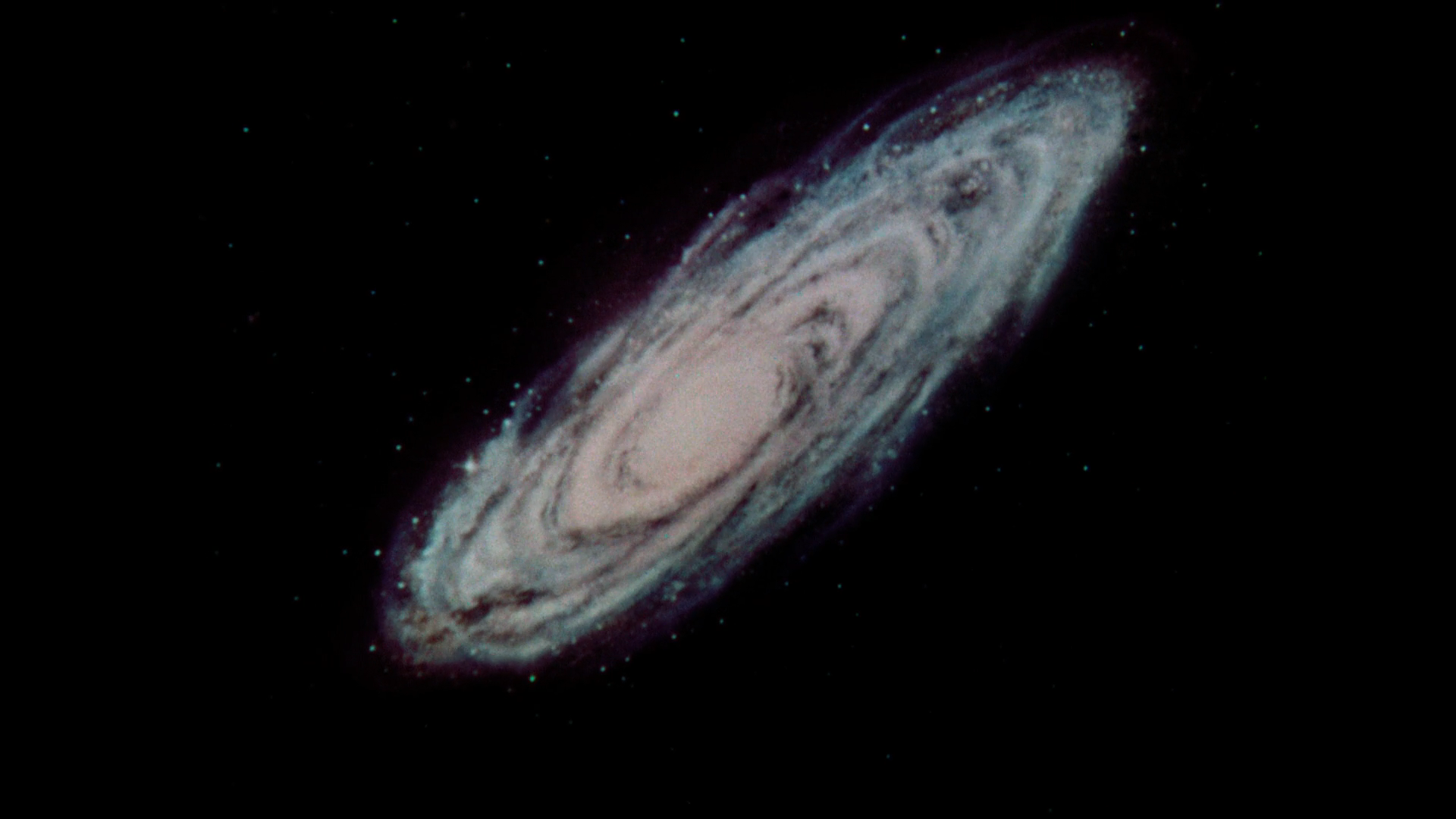 The episode begins with a shot of the Milky Way galaxy. William Shatner’s voice booms with a slightly different speech than we are used to, accompanied by a very different musical motif:
The episode begins with a shot of the Milky Way galaxy. William Shatner’s voice booms with a slightly different speech than we are used to, accompanied by a very different musical motif:
“Enterprise log: Captain James Kirk commanding. We are leaving that vast cloud of stars and planets which we call our galaxy. Behind us, Earth, Mars, Venus… even our sun are specks of dust. The question: what is out there in the black void beyond? Until now, our mission has been that of space-law regulation, contact with Earth colonies and investigation of alien life. But now, a new task: a probe out into where no man has gone before.”
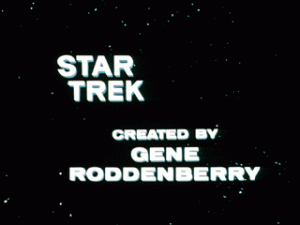 The words “STAR TREK” zoom onto the screen not in yellow, but in white with blue outline. The font is noticeably subdued compared to what we’re used to. The only other credits that appear are the familiar “created by Gene Roddenberry” and “Starring William Shatner”. (the music that accompanies the credits can still be found on the Star Trek: Vol. 1 soundtrack of “The Cage” and “Where No Man Has Gone Before”.)
The words “STAR TREK” zoom onto the screen not in yellow, but in white with blue outline. The font is noticeably subdued compared to what we’re used to. The only other credits that appear are the familiar “created by Gene Roddenberry” and “Starring William Shatner”. (the music that accompanies the credits can still be found on the Star Trek: Vol. 1 soundtrack of “The Cage” and “Where No Man Has Gone Before”.)
The next very obvious change comes right after the credits. Over a starfield come the words “STAR TREK ACT ONE”. That’s right. As originally conceived, Star Trek would have had act breaks like the Quinn Martin dramas of the time (i.e. The Fugitive).
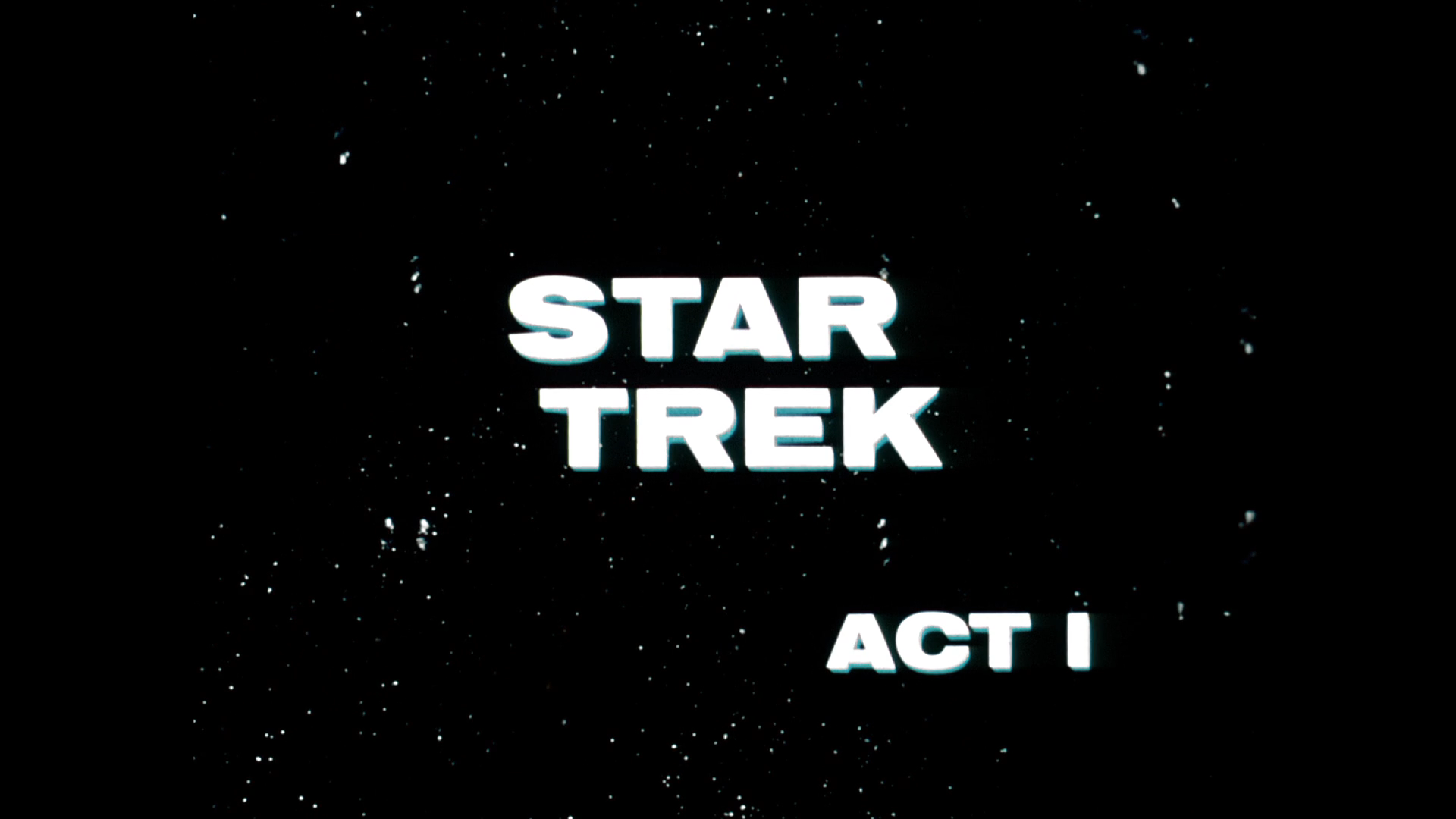
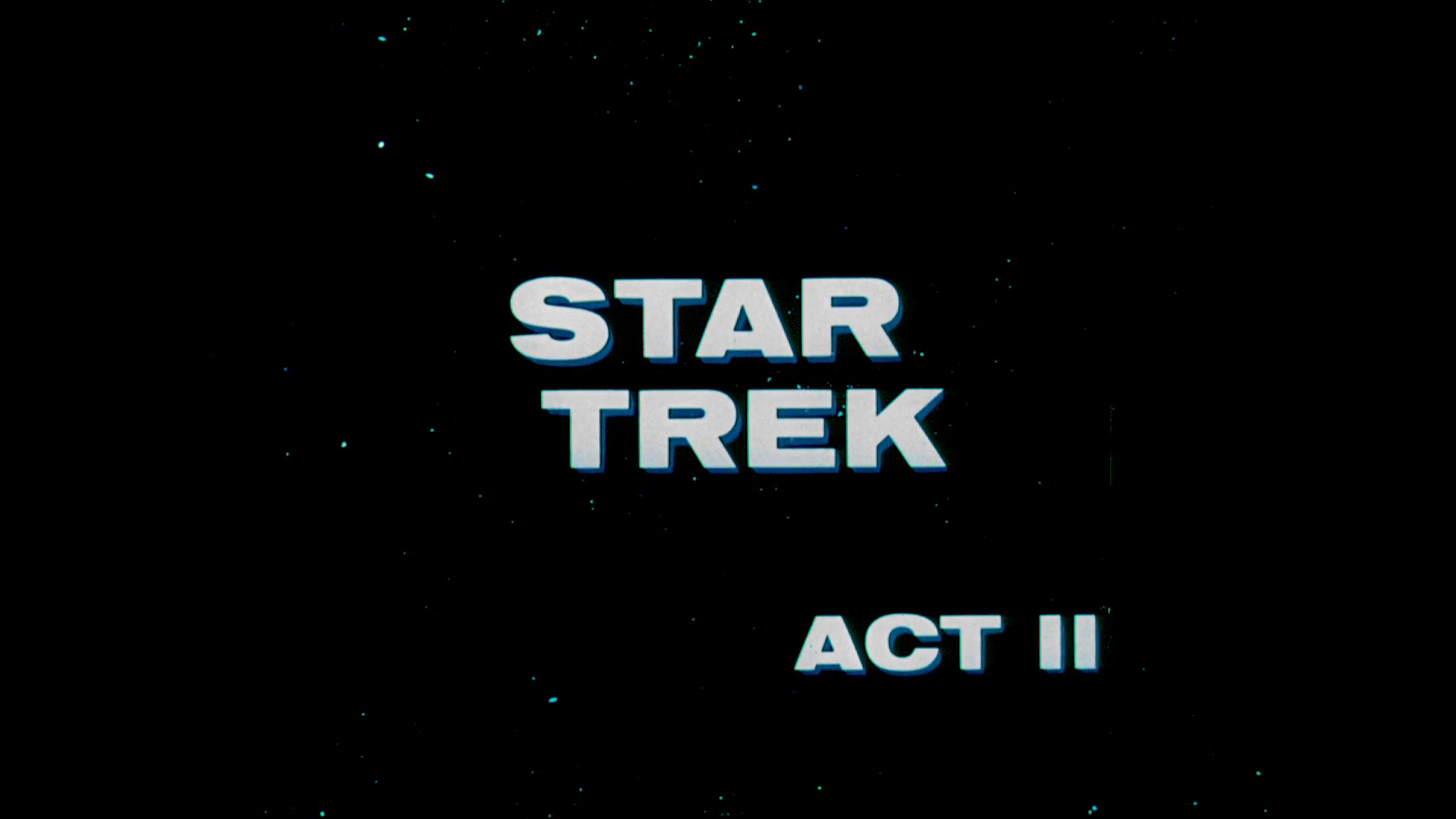
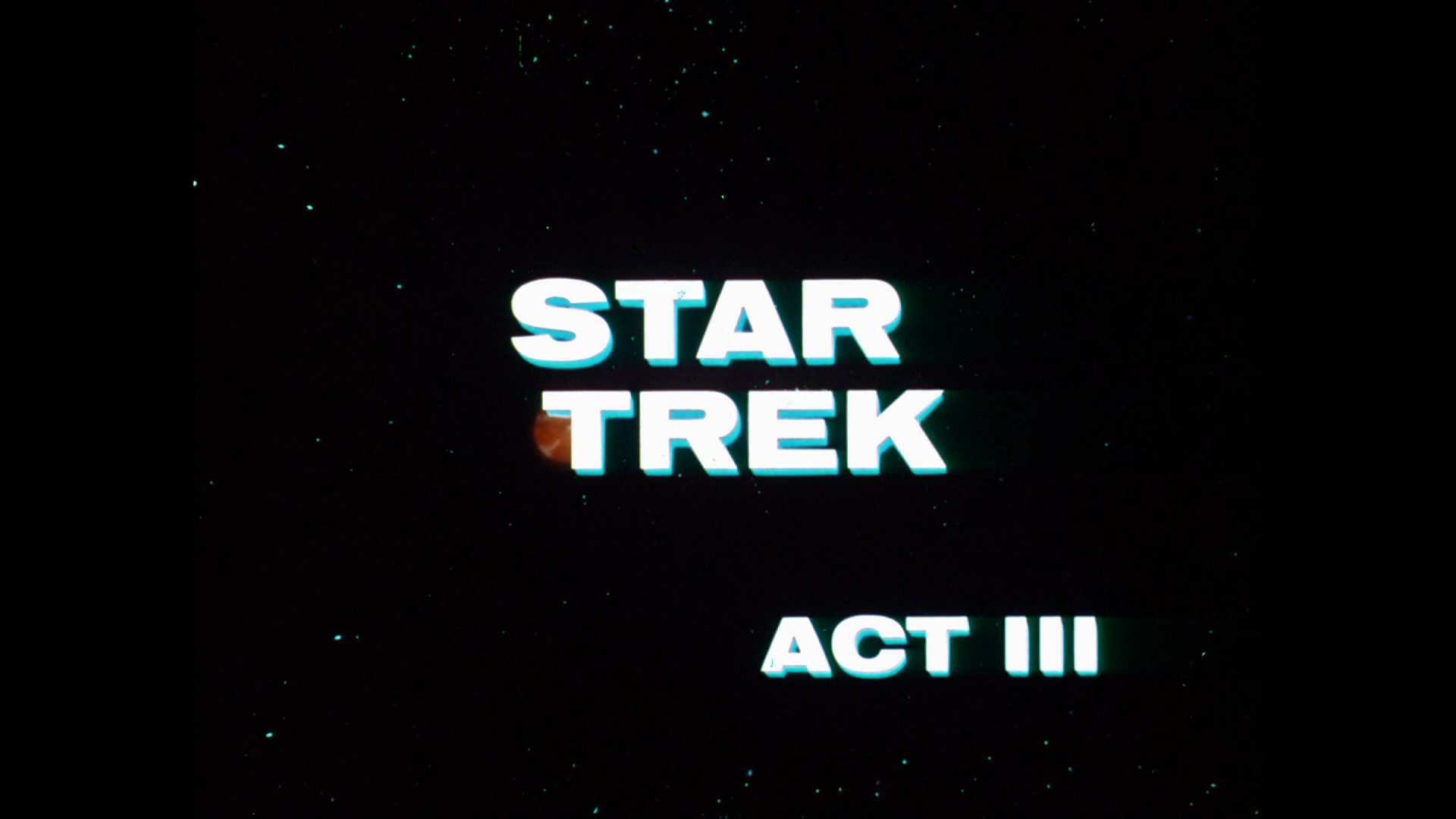
The Enterprise encounters an old-style distress beacon from the S.S. Valiant. They beam it aboard. As Kirk commands Scotty to start the beacon transmitting, the next big format change smacks us in the face: “TONIGHT’S EPISODE WHERE NO MAN HAS GONE BEFORE”
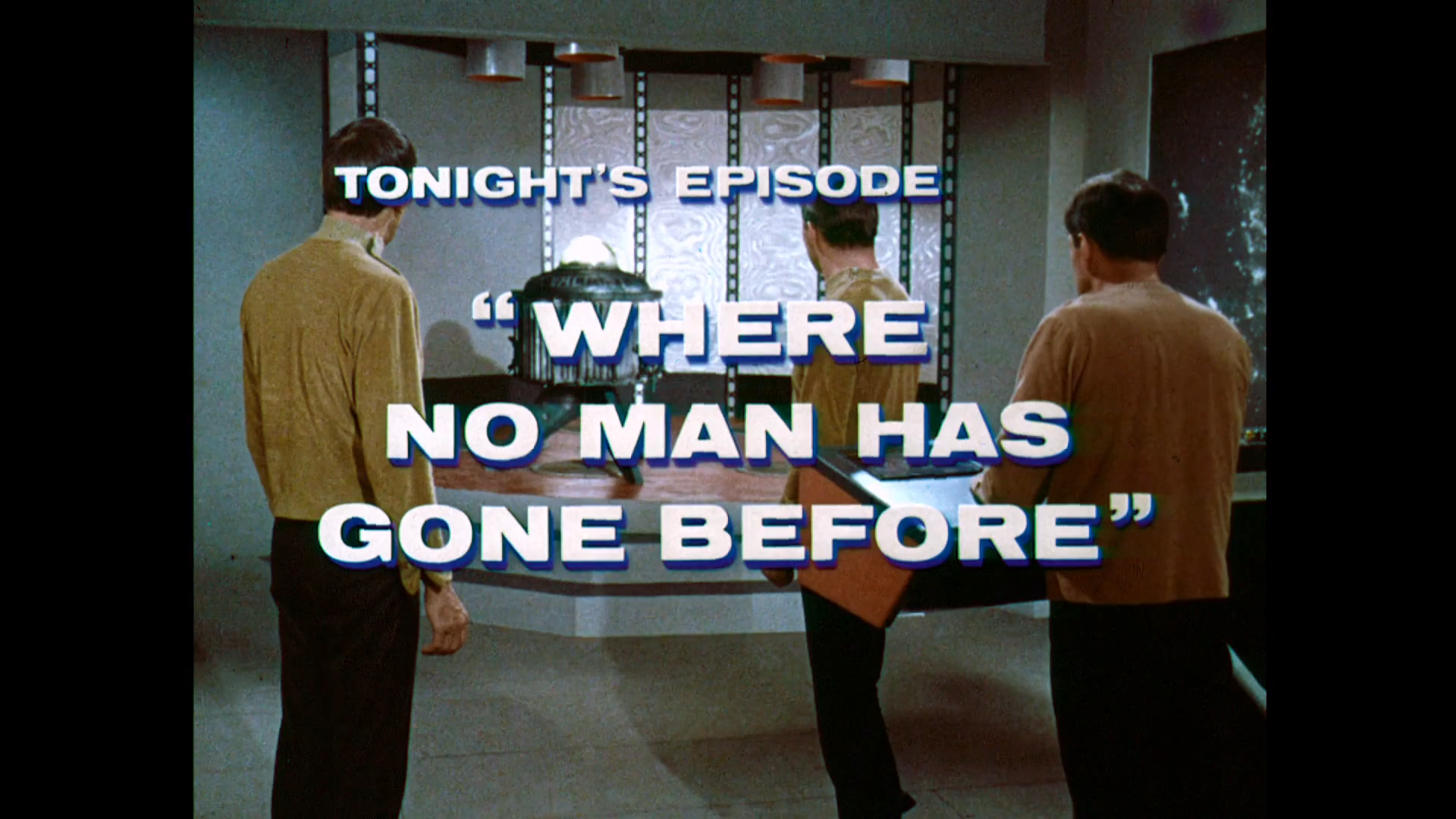
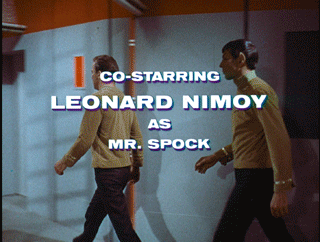 As Kirk and Spock race to the bridge amid the flurry of activity, we’re treated to more credits “CO-STARRING STARRING LEONARD NIMOY”, “GUEST STARS GARY LOCKWOOD” “AND SALLY KELLERMAN”.
As Kirk and Spock race to the bridge amid the flurry of activity, we’re treated to more credits “CO-STARRING STARRING LEONARD NIMOY”, “GUEST STARS GARY LOCKWOOD” “AND SALLY KELLERMAN”.
For the most part, the show then continues as we remember it, with a few added clips here and there as the original running time of the episode was 50 minutes. At each act break, we get a new “ACT” card when we come back.
Finally, as the Enterprise zooms away, we’re treated to a very abbreviated end title sequence from what we’re used to, complete with different music, and ending with the DESILU logo animating on under the shot of the Enterprise leaving Delta Vega.
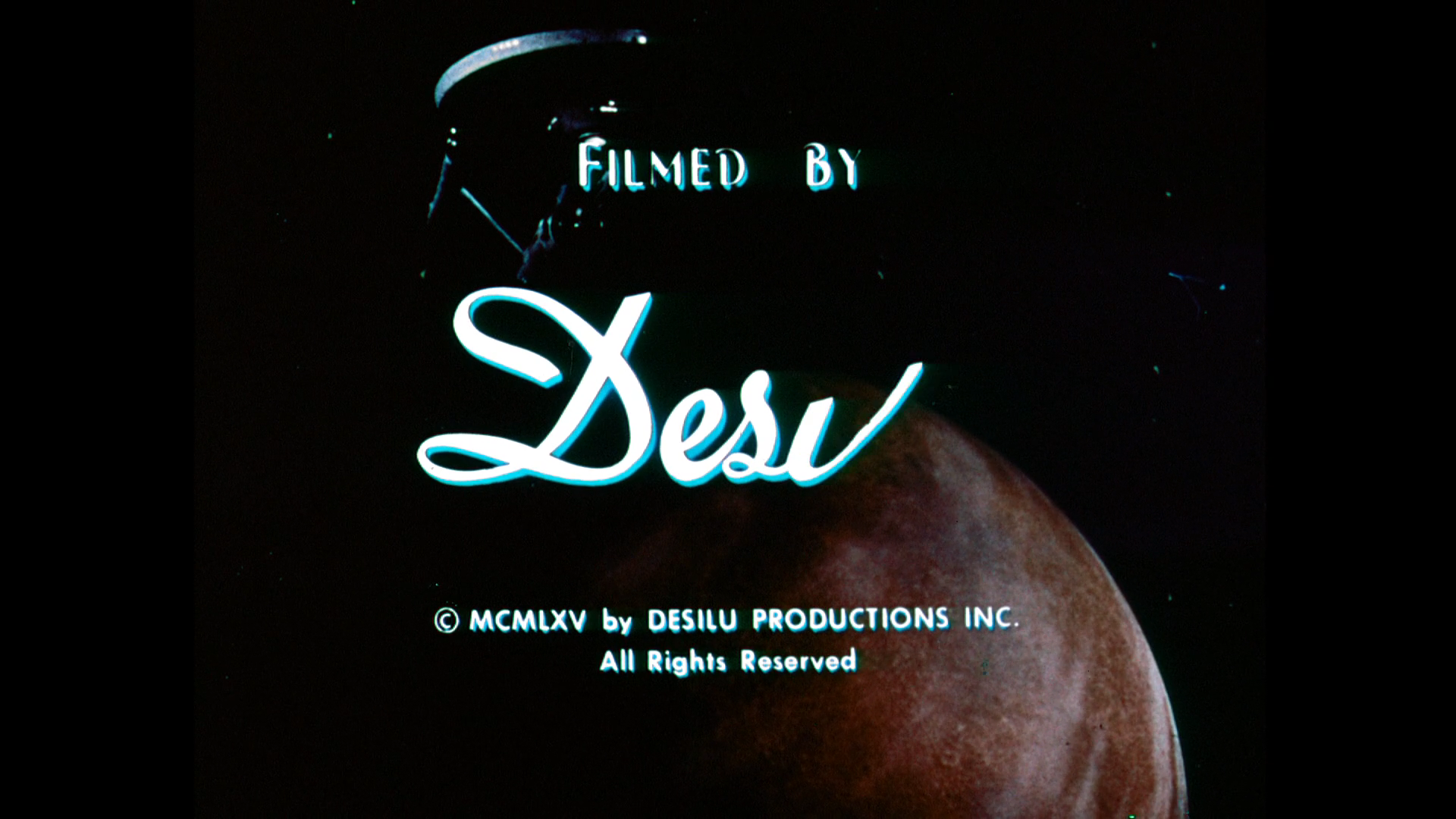 Despite the fact that the theme for this episode was chucked for production in favor of the theme we know and love, it does appear as a motif in many pieces of incidental music from the first season. For example, in “The Naked Time”, when the Enterprise breaks away from the planet and the engines implode, the music rises into the “Where No Man Has Gone Before” theme. And as is the case in many of the shows of the time, the incidental music from “Where No Man Has Gone Before” was used to help score other episodes, meaning that the themes lived on well past the episode that brought them to life.
Despite the fact that the theme for this episode was chucked for production in favor of the theme we know and love, it does appear as a motif in many pieces of incidental music from the first season. For example, in “The Naked Time”, when the Enterprise breaks away from the planet and the engines implode, the music rises into the “Where No Man Has Gone Before” theme. And as is the case in many of the shows of the time, the incidental music from “Where No Man Has Gone Before” was used to help score other episodes, meaning that the themes lived on well past the episode that brought them to life.
All in all, the new release of the original “Where No Man Has Gone Before” doesn’t show you a “lost” episode or a story that we haven’t seen before. What it does do is show you what Star Trek could have been like… if things had just been a little different.
